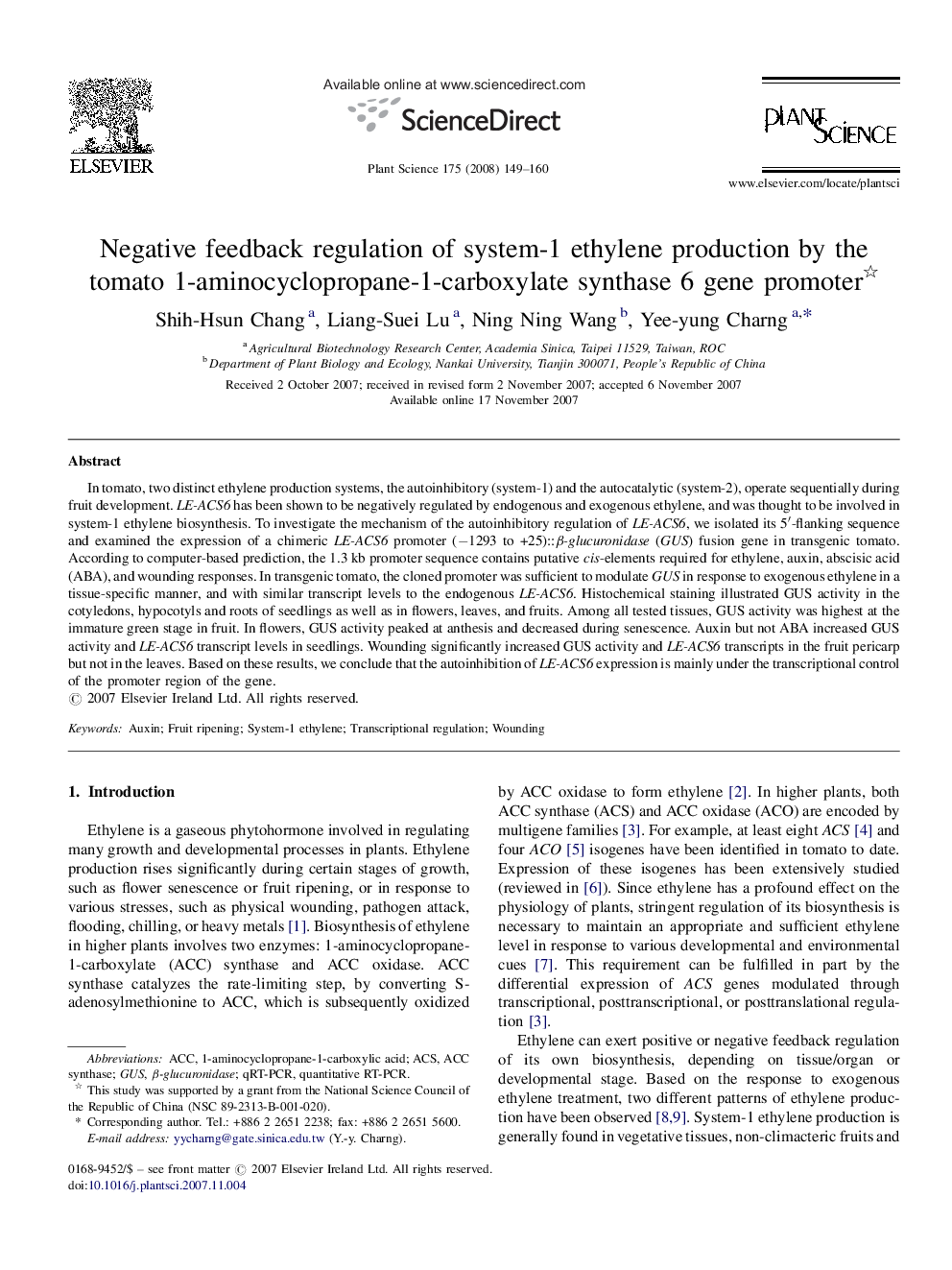| Article ID | Journal | Published Year | Pages | File Type |
|---|---|---|---|---|
| 2018354 | Plant Science | 2008 | 12 Pages |
Abstract
In tomato, two distinct ethylene production systems, the autoinhibitory (system-1) and the autocatalytic (system-2), operate sequentially during fruit development. LE-ACS6 has been shown to be negatively regulated by endogenous and exogenous ethylene, and was thought to be involved in system-1 ethylene biosynthesis. To investigate the mechanism of the autoinhibitory regulation of LE-ACS6, we isolated its 5â²-flanking sequence and examined the expression of a chimeric LE-ACS6 promoter (â1293 to +25)::β-glucuronidase (GUS) fusion gene in transgenic tomato. According to computer-based prediction, the 1.3 kb promoter sequence contains putative cis-elements required for ethylene, auxin, abscisic acid (ABA), and wounding responses. In transgenic tomato, the cloned promoter was sufficient to modulate GUS in response to exogenous ethylene in a tissue-specific manner, and with similar transcript levels to the endogenous LE-ACS6. Histochemical staining illustrated GUS activity in the cotyledons, hypocotyls and roots of seedlings as well as in flowers, leaves, and fruits. Among all tested tissues, GUS activity was highest at the immature green stage in fruit. In flowers, GUS activity peaked at anthesis and decreased during senescence. Auxin but not ABA increased GUS activity and LE-ACS6 transcript levels in seedlings. Wounding significantly increased GUS activity and LE-ACS6 transcripts in the fruit pericarp but not in the leaves. Based on these results, we conclude that the autoinhibition of LE-ACS6 expression is mainly under the transcriptional control of the promoter region of the gene.
Keywords
Related Topics
Life Sciences
Agricultural and Biological Sciences
Plant Science
Authors
Shih-Hsun Chang, Liang-Suei Lu, Ning Ning Wang, Yee-yung Charng,
